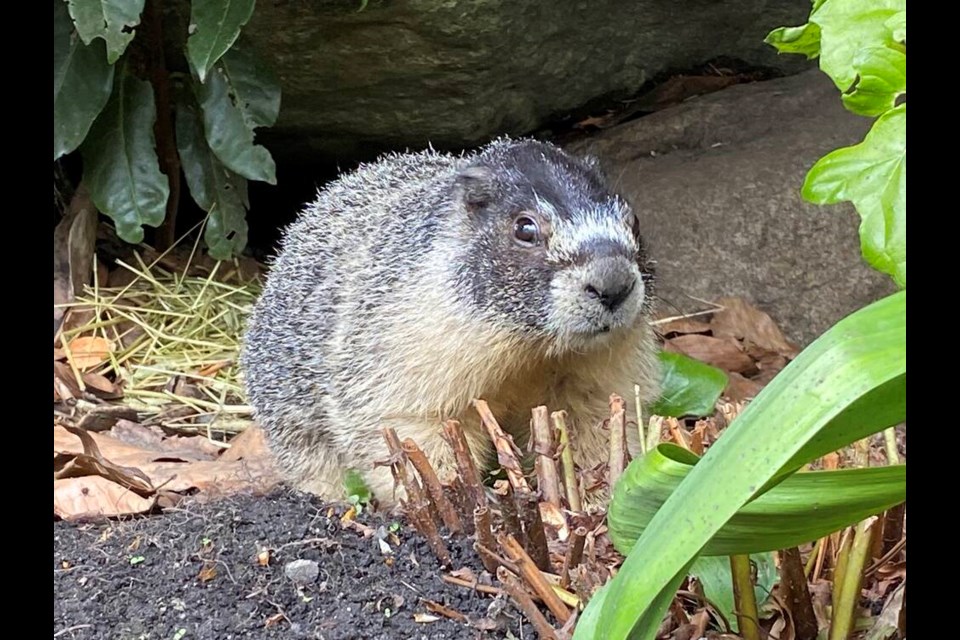Tulips and other spring flowers are blooming all around the Empress Hotel, but they’re not the only sign of spring at the Inner Harbour landmark.
Roger the yellow-bellied marmot returned from hibernation in mid-March and is once again delighting staff, guests, tourists and neighbourhood residents alike with cameo appearances on the hotel grounds.
Named after former Empress general manager Roger Soane, Roger is most often spotted in a rock grotto tucked behind the tulips in the Centennial Garden.
“He has the most sought after and only harbourfront rock garden suite,” Lisa McPhail, director of public relations for the Fairmont Empress, said Wednesday. “He’s been living the high life here since 2008.”
A sign nearby explains Roger’s history and asks that people not feed the stocky herbivore, who is technically a rodent and most closely resembles a robust squirrel.
Roger feasts on “lush Fairmont Empress foliage” and seems to be “making ends meet on his own accord,” McPhail said.
“He seems very, very happy — he eats a lot of greens he finds here in our gardens, and appears to be very well fed, if not a bit plump this season.”
No one knows Roger’s exact age, but judging from the fact the first sighting was in 2008, he’s at least 16 — about the life expectancy of the average marmot.
Roger is not a Vancouver Island marmot, a critically endangered species and the subject of conservation efforts in the mid-Island, mostly around Mount Washington.
He’s a yellow-bellied marmot, a species found in Alberta. Popular lore suggests Roger likely hitched a ride aboard a transport truck to Victoria “and made this his forever home,” said McPhail.
After early attempts to relocate him failed — he proved to be persistent about returning to his Empress rock grotto — Roger has settled into life as a beloved hotel fixture who loves to bask in the afternoon sun on the rocks.
McPhail said there are neighbouring residents who come once or twice a week to visit Roger on their walks, just to say hello or get a peek at him.
Roger will often respond to tongue-clicking kissing-type sounds and higher-pitched voices, she said.
The curious animal even poses for cameras, said McPhail.
Recently, Roger delighted visiting international media with an early-evening appearance, dispelling any notions that his existence was more fiction than fact, McPhail said.
“Roger has long been a star here, but now we can call him an international star,” she said, noting many members of the media took out their cameras upon spotting him.
Roger is likely to be seen out enjoying the spring and summer weather until the end of September, after which he will return again to his den to hibernate, entering a state of torpor — a slowing of his heart rate and metabolism — until next March.
>>> To comment on this article, write a letter to the editor: [email protected]



